Over the years, sim-racing has gained a lot of ground, reaching amateur, seasoned and professional audiences alike. These days, it’s much simpler – and less expensive – to do training sessions on a sim-racing rig than on a real track. Admittedly, there are limits in terms of feel and immersion, but if you just want to practice so you don’t lose your touch, then sim-racing is perfect. What’s more, sim-racing titles have developed considerably, and are now capable of offering a very high degree of realism.
Typically, sim-racing setups consist of active peripherals(steering wheels, Direct Drive base, pedals, shifter, handbrake), a monitor( ultra-wide-angle curvedscreen ), a PC or console to run the racing title, and chassis to house it all. Additional components, such as D-Box cylinders, can also be found to add dynamism to the chassis, enabling it to translate body movements.
In absolute terms, building a sim-racing rig is a relatively simple operation, as long as you know what you’re doing, and where you want to get to. In almost all cases, it involves assembling a cockpit and the active components that make up the sim-racing rig. And that can be a problem for some racers. You see, not everyone is a DIY enthusiast, and even less a specialist in computer components (CPU, GPU, etc.), which makes the task of assembling a rig rather arduous. Fortunately, there are companies specializing in this field, such as Australia’s Trak Racer. Its catalog includes complete setups, with all the equipment needed for racing, and we’re going to take a look at them in what follows.
The TR8 Pro

Track Racer’s TR8 Pro is a complete setup, with tubular chassis, bucket, pedals, DD base, GT steering wheel, curved screen and PC to run sim-racing titles, all for around €6250, with no options, and no delivery charges. I know, it sounds expensive, but wait until you read the rest to decide.
Let’s start with the chassis. It’s tubular, with a minimalist design. The structure is very open, making it easy to get in and out of the cockpit. The dominant color is black, with a few Australian brand logos here and there. At the rear, there’s a sliding support for a bucket seat, included in the bundle by the way. The latter offers excellent support, as well as being adjustable.
At the front – underneath, to be precise – is a deck and pedal assembly. The deck is adjustable at several angles, allowing you to easily find the right riding position. As for the crankset, it features 3 fully adjustable pedals and a Load Cell brake capable of withstanding 200 kg of pressure.
The top floor features the Simucube 2 Sport and the GT Tahko steering wheel from the same brand. Using peripherals from the Simucube range implies excellent sensations, and I can assure you that this is the case. And behind the DD base, a 49″ ultra-wide-angle screen takes its place to dazzle your eyes. The whole setup runs on PC gaming and peripherals (keyboard and mouse).
The TR80
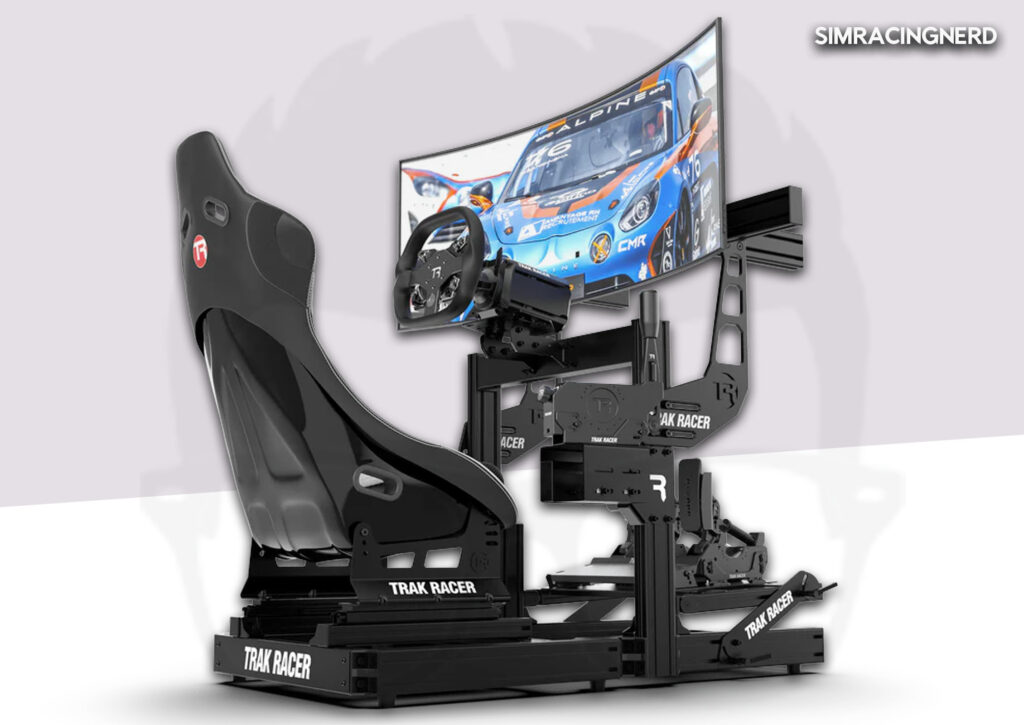
We now move on to the TR80. Gone is the tubular chassis, which is both beautiful and sturdy, by the way, in favor of an aluminum profile chassis. The big advantage of profile over tubular is greater strength, as well as greater customizability.
On a tubular chassis, brackets are rare, except for those already provided by the manufacturer. This means you can’t customize the setup to suit your needs. But this doesn’t apply to the aluminum profile, which rests on standard square bars. All you have to do is add a bracket if you need one, even if it comes from another manufacturer.
The TR80 rests on an aluminum profile chassis, whose design is equally sober. There are red accents on the Direct Drive base deck, and stripes on the structural supports.
As for the differences between the TR8 Pro and TR80, only the chassis, screens and bucket are different, and the addition of speakers to the setup. The rest is identical to Track Racer’s entry-level bundle. The TR80’s bucket is much more attractive and, above all, much more racing-oriented than the one fitted to the TR8 Pro. As for the monitors, we’re talking about a configuration of three 32″ diagonal curved screens, offering a very high level of gaming immersion.
The TR80 is a far more customizable chassis than the TR8 Pro, with various optional components and, above all, far more advanced adjustments to the base and pedalboard decks. However, this comes at a price, and you can expect to pay around €8500 for this bundle, still without delivery charges, and excluding options.
The Alpine Racing TRX
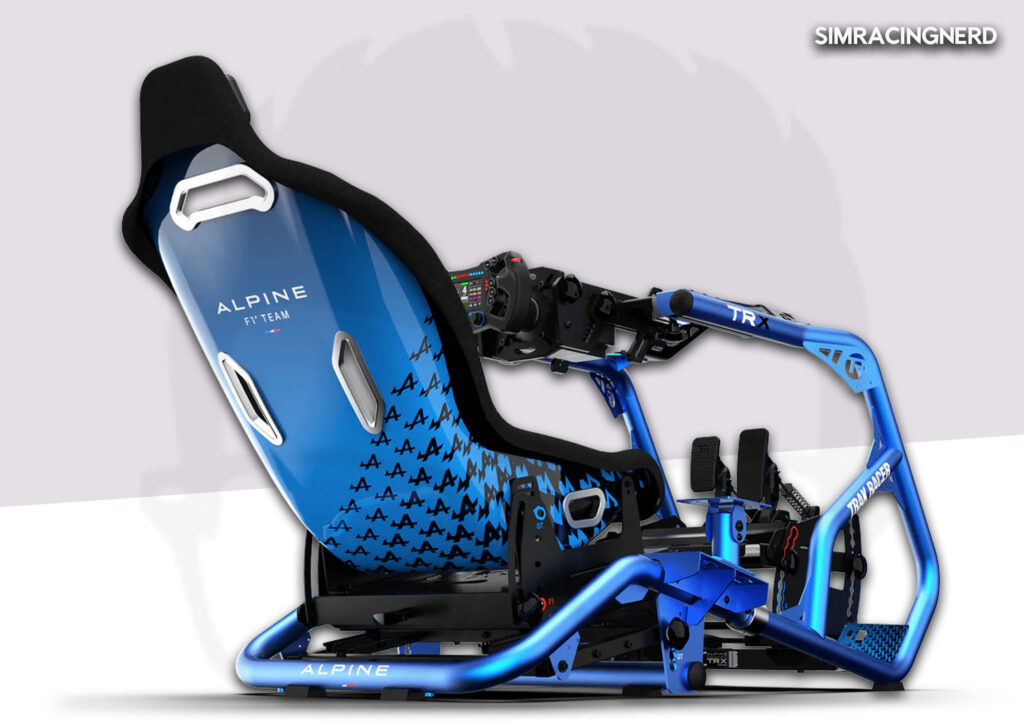
The Alpine Racing TRX is a chassis in the colors of the F1 team of the same name, namely Alpine. Unsurprisingly, this cockpit is specifically designed for Formula racing, but Track Racer’s engineers have equipped it with a hybrid mode, transforming it into a GT chassis. The reason is quite simple: for one thing, the bundle is expensive, and if it were only for F1, sales would be impacted. Also, and this is in relation to the price, having a hybrid chassis makes it possible to attract a greater number of customers to sim-racing.
Back to the Alpine TRX. Design-wise, there are touches of the TR8 Pro, mainly in the structure. The tubular chassis in blue is very beautiful, I must say, emphasizing the F1 configurations with the steering wheel very close to you. The bucket seat is also in Alpine colors, accentuating the beauty of the chassis.
The big changes compared to the other bundles we’ve seen are the sim-racing equipment. For the base, the Simucube 2 Pro replaces the 2 Sport, and the steering wheel is Formula-style.
The screen is the 49” ultra-wide-angle curved, with sound bar too, as on the other chassis. As for the PC, it’s the same sauce. The price, however, has gone up. Expect to pay close to €10,000, excluding delivery charges and options.
The TR160
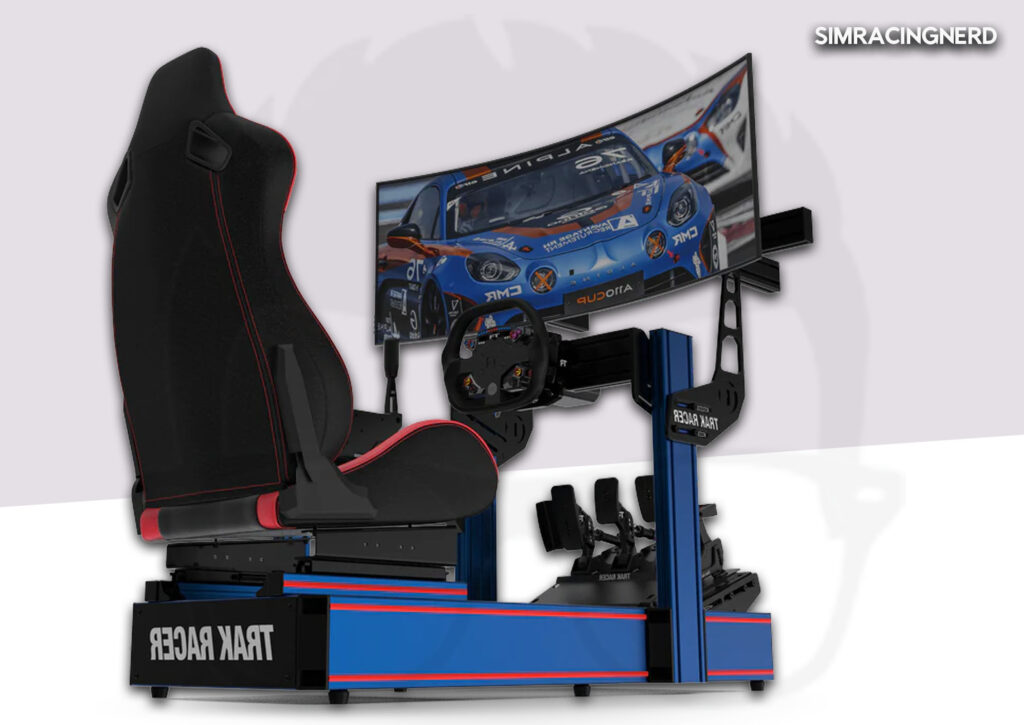
We end with Track Racer’s top-of-the-range TR160, which is more or less the best the brand has to offer. The chassis is based on that of the TR80, with the Alpine’s sim-racing peripherals and three 34″ curved monitors. The brand has added a sound bar, speakers, D-Boxes for body movements and shifters. As I said, it’s the ultimate in Track Racer products.
And since this bundle is a full option, so is the price. A bill of almost €19800, without delivery charges, and a few other additions that aren’t too necessary in sim-racing (a few brackets, gloves, etc.), well, for a number of racers.
How to choose?
Simply put, you buy the one you can afford. No, seriously, price is a big part of choosing a bundle, but it’s also what you’re going to do with it that counts.
For GT, touring and rally racing, I’m in favor of the TR8 Pro or TR80. They’re versatile, relatively affordable and, above all, accessible in terms of feel and feedback. But if you’ve got some sim-racing experience and are looking for a very complete bundle, you’ve got the Alpine for Formula pros, and the TR160 for everything else.
And, of course, price is an important part of the equation. The first two bundles are “cheap”, well, compared to the Alpine and TR160, but on the other hand, you’re getting a turnkey system, ready to blast the clock on Assetto Corsa and iRacing. So, as far as I’m concerned, the price is justified.

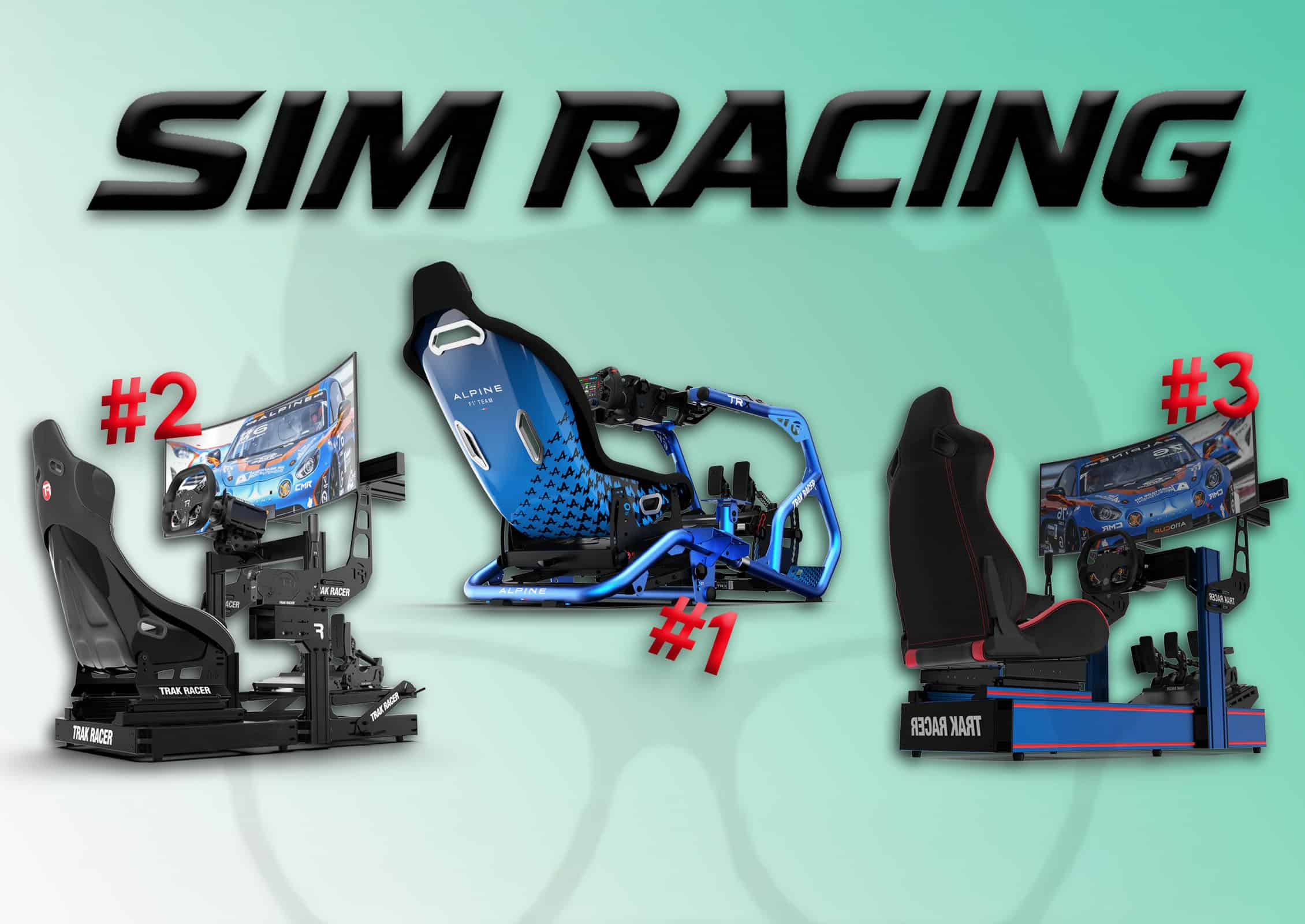
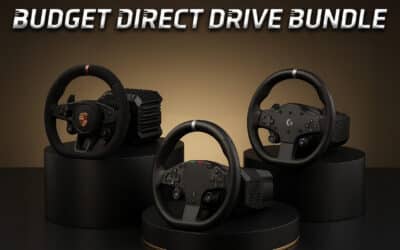
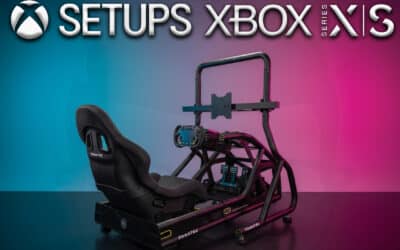

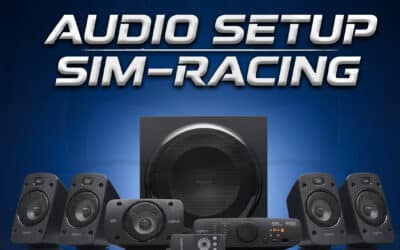

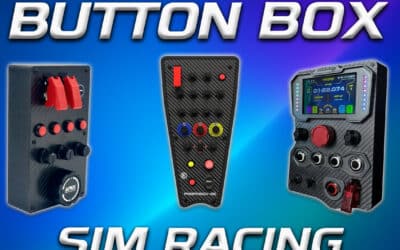
0 Comments